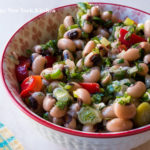A tablecloth sets the mood and the tone of whatever meal you’re serving and, as an added bonus, it helps protect the table. Shopping for tablecloths can be pretty confusing though. Often times trying to decide what size and shape to get is a difficult task. Here is a good way to calculate your perfect tablecloth no matter how small or large your table is.
Get Your Table Ready To Be Sized
If you have an extendable table with leaves make sure to extend or shrink your table to the size you will be using before you measure your table for linens. For a casual tablecloth this will probably be the table size you use most frequently. If you’re hosting a formal dinner, it will be the dimensions you plan to use for your special occasion.
Calculate Your Tabletop Dimension
Measure both table length and width. For either, this is most easily accomplished by measuring from the center of your table outward, then multiplying the measurement by two.
Factor In The “Drop” You Want
Determine the desired length of your tablecloth drop (how far over your table you want the cloth to hang. The standard is considered to be 10 inches. Anything less than 6 inches will make your table look out of proportion and your linens too small. You can also extend your drop for a more formal look, but if you do this, you should measure the difference between the table and the chairs to see what will look good when chairs are pushed under the table without gathering too much fabric or draping on your guests’ laps.
Do A Little Table Math
For a rectangular table, multiply your desired drop by two, then add on the actual measurements of the table. For example, if you are going for a 10-inch drop and your table is 68 inches long, your mathematical equation would be 10 (the desired drop, in inches) multiplied by 2 (to factor in both sides of the table) with 68 (the length of your table) added. Your desired tablecloth length would be 88 inches.
For A Round Table
For a round table, calculate the size slightly differently. You will want to multiply your desired drop by two, then measure the table through its diameter from one side to the other, adding that to the total number. For instance, if your round table has a 50-inch diameter and you want a 10-inch drop, your calculation would be (10×2) + 50, which equals 70. Your desired tablecloth size would be a 70-inch round.
If You Don’t Find The Exact Size
If you have a difficult time finding the exact size you want, then simply size up to the next available size.
Rectangular Tablecloth Size Calculator.
Table Length Tablecloth Size
62″ to 72″ 70″ x 90″
80″ to 92″ 70″ x 108″
96″ to 110″ 70″ x 126″
110″ to 126″ 70″ x 144″
Round Tablecloth Size Calculator
Table Size Tablecloth Size
42″ to 55″ Round 70″ Round
55″ to 70″ Round 90″ Round
©Tiny New York Kitchen © 2020 All Rights Reserved
You may try to keep basil through the winter, however, sweet basil is meant to live its life cycle within one year and then go to seed. At the end of the season, though, you may try to keep it alive by moving potted basil indoors to enjoy them for months to come.
Inspect And Transplant
Before you bring your basil indoors make sure to inspect it thoroughly for any insects. Flush the soil with water and rinse off the foliage, using a blast of water from the garden hose to chase away any pests and avoid later problems. Then, you can gently dig up your basil from the garden any time before the ground freezes.
Transfer To A Pot
Select a container large enough to accommodate your basil plus a little room for growth. Place a layer of potting mix on the bottom of the pot, then set the basil on top of that. Fill in the spaces around the roots with more potting mix. Press the soil firmly around the basil’s roots, leaving about an inch between the soil and the rim of the pot. For smaller basil plants, try placing several together in a window box that fits on a sunny sill. After settling your basil into its new container, water until it drains out the bottom of the pot.
Acclimate Your Basil
When bringing your basil indoors, it will need a little time to adjust to the new surroundings. You might notice that your basil drops a few leaves and grow more slowly. Ease your basil into life on the inside by setting them in a spot with indirect light. Don’t put them in bright sun right away. After a couple of weeks, you may move the pots to a spot that will get a least four hours of sun or bright light. If you don’t have a window that provides plenty of sunlight, you can also grow your herbs under fluorescent bulbs or with a grow light setup.
Give Your Basil Some Love
Turn pots once a week or so to help all sides of your basil get enough light. Water when the soil feels dry to a depth of 1 inch. Mist the leaves daily to boost the humidity level. You can also tilt the pots over the sink and gently rinse their foliage with tap water every once in a while, to keep them clean and deter any pests that might show up. You may want to boost the humidity around your basil by placing their pots in a pebble filled tray. Water the pot regularly, allowing excess water to over flow into the tray.
Cuttings
To make sure you always have access to fresh basil throughout the winter, places cuttings in a small vase of water and they will soon develop roots. When the roots are a couple of inches long, put the cuttings to expand you supply of fresh basil. Or you may snip sprigs whenever you need some fresh basil for your favorite dishes. Either way, this will encourage your basil to produce new growth and stay compact until you can move them outdoors again in the spring.
With a little preparation, basil can come indoors for the winter. Growing them in containers will give you a fresh supply for cooking all year long and you will be able to take them back outside and replant when spring arrives.
©Tiny New York Kitchen © 2020 All Rights Reserved
Red, ripe, sweetly acid tomatoes are certainly one of the most prized of the summer vegetables. Let’s face it, tomatoes are only good during the summer and off-season ones just don’t taste like anything. In season the best solution is to grow your own or to know a gardener nearby. Greenhouse tomatoes are probably your best choice out of season.
Cherry tomatoes often have better flavor than regular tomatoes, and that is usually true out of season because they are greenhouse grown. Keep them at room temperature. Wash them before using, and when cut in half for serving they are certainly easier to eat.
To peel tomatoes, blanch the whole tomatoes. Drop 2 or 3 at a time into a large pot of rapidly boiling water and boil exactly 10 seconds. Cut out the core and peel the skin down from it. You may blanch tomatoes several hours in advance and peel them later. They keep fresher when still in their skins.
Many recipes call for tomato pulp, meaning you must seed and juice your tomatoes. To do so, halve the peeled tomato crosswise (not through the core). Then holding the half over a sieve set in a bowl, gently squeeze to dislodge most of the jelly-like substance, juice, and seeds; finally, poke out the residue with your finger. Press the juices out of the residue in the sieve and use in soups or sauce, or as a refreshing drink.
©Tiny New York Kitchen © 2020 All Rights Reserved
Many of us are preserving summer’s bounty to enjoy during colder months.
Here are tips on how to preserve using the hot water bath method. It’s really not difficult if you follow these easy steps.
High acid foods like tomatoes, pickles, salsa, jelly, pie filling, jam, fruit, and chutney are great for canning using the hot water bath method.
Preheat Jars
Fill water bath canner (or large pot) to cover empty jars by at least 1 inch of water. Heat jars to simmer (180 degrees F) to prevent jar breakage.
Fill Jars
Following a canning recipe, fill a hot jar with prepared food leaving enough space between the food and the rim (headspace) as indicated in the recipe.
Tighten Lids And Bands
Wipe any food from the rim of the jar. Center new lid on the jar, then twist on band just until fingertip tight.
Process Jars
Place filled jars onto rack in simmering water. If you don’t have a rack designed for home preserving, use a cake cooking rack. Filled jars should be covered by 1 inch of water. Place lid on canner and heat to a steady boil. Boil jars for the time specified in recipe. Adjust for high altitudes.
Altitude Adjustment
1,001 to 3,000 ft increase processing time 5 minutes; 3,001 to 6,000 ft increase 10 minutes; 6,001 to 8,000 ft increase 15 minutes; 8,001 to 10,000 ft increase 20 minutes.
Cool Down
Turn off heat and remove canner lid. Let jars stand in water for 5 minutes. Remove from water and cool jars upright on cutting board, wire rack or towels on countertop for 12 to 24 hours.
Check The Seal
After cool down, press on center of lid. If jar is fully sealed, the lid will NOT flex up or down. Remove the bands and gently attempt to lift lids off with your fingertips. Properly sealed lids will remain attached. Wipe canning jars, lids, and bands clean. Store sealed jars in pantry for up to 18 months. Jars may be stored with or without bands. If a lid fails to seal within 24 hours, immediately refrigerate the food product.
©Tiny New York Kitchen © 2020 All Rights Reserved
We all know that chickpeas are a fiber-filled addition to soups and salads, but have you ever thought about the ingredient that you’re leaving behind in a can of chickpeas? That thick, cloudy liquid that typically gets poured down the drain when chickpeas are drained. That liquid id called aquafaba, and it might just be the ingredient your baked goods and cocktails are missing.
Aquafaba is the liquid that’s leftover when dry chickpeas are cooked, and it is the brine that canned chickpeas soak in to maintain freshness while sitting on grocery store shelves. You should save it because it’s an excellent vegan egg substitute that can be used in baked goods, to emulsify vegan mayonnaise to add a foamy element to your favorite cocktails, and so much more.
To use aquafaba shake it in a cocktail shaker for an extra frothy espresso martini or whisk it alongside a thin stream of olive oil for a vegan aioli. Although the liquid from other beans (like black beans and kidney beans) could work just as well, chickpeas don’t give off any color, so the resulting clear, yet slightly cloudy, liquid is much more versatile. Another nice thing about aquafaba is that you don’t need to use too much of it. Generally, three tablespoons of aquafaba will replace one egg.
Aquafaba has a mild buttery and bean like flavor, but it easily takes on the flavor of what it’s added to and tends to cling to other flavors quite well, which explains why it works well in mayonnaise and in cocktails. Aquafaba should be stored in an airtight container in the refrigerator for up to 3 days.
Aside from the benefit of replacing an animal-based product with a plant based product, aquafaba doesn’t have a lot of nutrients, and it certainly has less protein than an egg does. It’s low in calories and carbohydrates, but it’s also pretty low in vitamins and minerals. If you aren’t vegan then there aren’t a lot of health benefits to using aquafaba over regular eggs. It is a good step in preventing food waste, though.
©Tiny New York Kitchen © 2020 All Rights Reserved
For many years I have used my fancy dishes, even for my morning breakfast. Now that we have been at home more than ever, it seems especially important that this is the time to use them. Why save special plates for company or holidays? Pull out your grandmother/s china. Even if it’s for dinner with the kids on a Wednesday night or a midday snack. Beautiful things are made for using!
©Tiny New York Kitchen © 2020 All Rights Reserved
Is there anything better than ripe, juicy summer tomatoes? Tomatoes shine in salads, as toast toppers, and in pasta.
Heirloom tomatoes are grown from seeds that have been passed down through generations and are not modified in any way. They come in hundreds of varieties.
The tomato is technically a fruit because it contains seeds. Still, in 1893, the U.S. Supreme Court ruled to classify it as a vegetable since that’s how it is used in cooking.
Unripe tomatoes won’t ripen in the fridge. Keep them on your counter until they are ready to eat.
The first tomatoes to arrive in Europe were called love apples, apples of paradise and golden apples. Some were considered too pretty to eat and used as table decorations.
22 pounds of tomatoes are eats per person per year in the U.S. About half of that comes in the form of ketchup and tomato sauce.
30,000 is the number of tomatoes produced in one year by the world’s largest tomato plant. They were grown in the greenhouses at Disney World.
25% of your recommended daily amount of vitamin C is in 1 medium tomato. Tomatoes are also high in vitamin A, vitamin E, and lycopene (an antioxidant that can improve your heart health and lower your cancer risk.
“Work With What You Got!”
©Tiny New York Kitchen © 2020 All Rights Reserved















